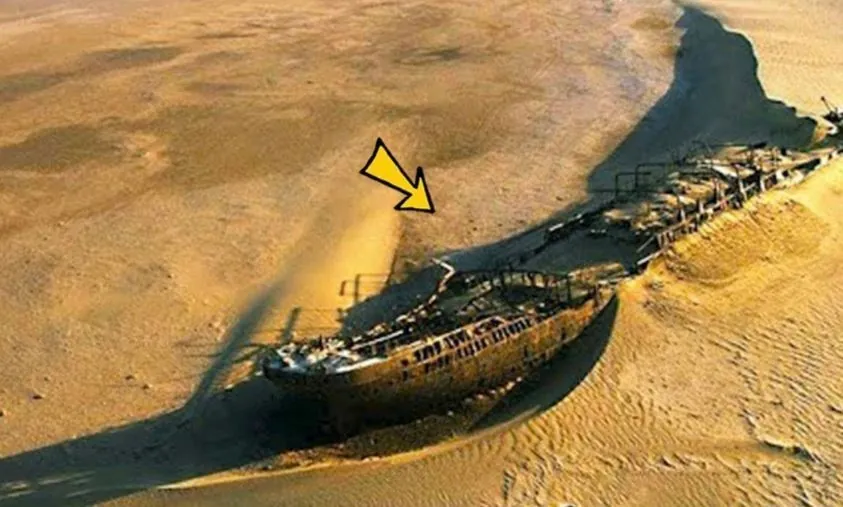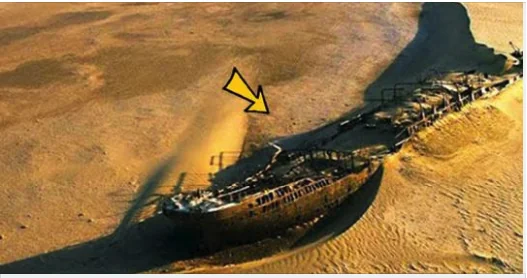In a remarkable archaeological find, a ship that disappeared five centuries ago has been uncovered in the desert of southwest Africa. This astonishing discovery has revealed that the ship was carrying a precious cargo of gold coins.

The Portuguese warship, known as Bom Jesus, embarked on its journey from Lisbon on March 7, 1533, destined for India. Its fate remained shrouded in mystery until 2008, when diamond mining activities along Namibia’s coast unearthed its remains. Caught in a fierce storm, the ship capsized near the shore, carrying down with it valuable treasures including copper and gold ingots. Astonishingly, nearly all of the ship’s cargo, including two thousand pure gold coins and thousands of pounds of copper ingots, remained remarkably well-preserved when it was finally discovered.
Alongside the wealth of coins and ingots, the shipwreck yielded a trove of other fascinating artifacts. Dr. Noli, a senior archaeologist at the Southern Africa Institute of Maritime Archaeological Research, notes that while storm activity in the area made finding a shipwreck plausible, the rapid recovery of a treasure chest containing gold coins dating back to 1533 was unexpected and confirmed the ship’s historical origin.
According to Dr. Noli, the ship met its demise during a violent storm that forced it perilously close to Namibia’s coast, where it collided with a rock and capsized. As the waters receded, the ship emerged in the desert. Although the storm caused significant damage, the absence of human remains suggests the crew either perished at sea or managed to escape.
Further investigations uncovered bronze bowls, cannons identified as long metal poles, muskets, metal fragments, swords, astrological instruments, compasses, a time capsule, and even silver coins. Based on the recovered cargo, experts believe the ship was en route from Lisbon to Western India, a common route for Portuguese vessels during that era.
Today, the wreck of Bom Jesus stands as an invaluable piece of history along the western coast of Sub-Saharan Africa, known as Sperrgebiet or ‘forbidden territory,’ previously explored by German diamond prospectors. Protected by mine security and accessible only to a limited group, discussions of creating a museum for the site are ongoing but uncertain.
This extraordinary find not only offers a glimpse into the past but also underscores the incredible adventures awaiting discovery beneath the Earth’s surface.


